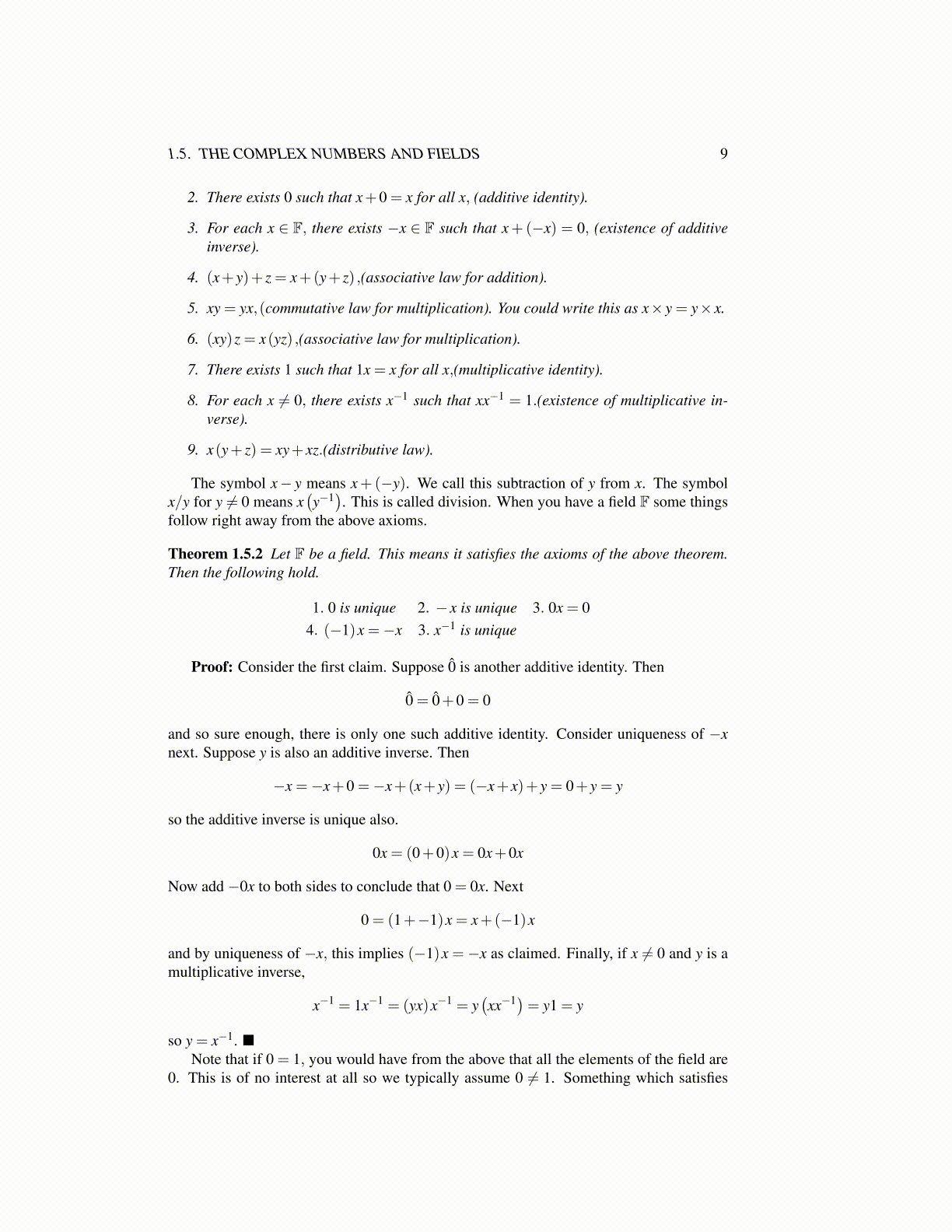
1.5. THE COMPLEX NUMBERS AND FIELDS 9
2. There exists 0 such that x+0 = x for all x, (additive identity).
3. For each x ∈ F, there exists −x ∈ F such that x+(−x) = 0, (existence of additiveinverse).
4. (x+ y)+ z = x+(y+ z) ,(associative law for addition).
5. xy = yx,(commutative law for multiplication). You could write this as x× y = y× x.
6. (xy)z = x(yz) ,(associative law for multiplication).
7. There exists 1 such that 1x = x for all x,(multiplicative identity).
8. For each x ̸= 0, there exists x−1 such that xx−1 = 1.(existence of multiplicative in-verse).
9. x(y+ z) = xy+ xz.(distributive law).
The symbol x− y means x+(−y). We call this subtraction of y from x. The symbolx/y for y ̸= 0 means x
(y−1). This is called division. When you have a field F some things
follow right away from the above axioms.
Theorem 1.5.2 Let F be a field. This means it satisfies the axioms of the above theorem.Then the following hold.
1. 0 is unique 2. − x is unique 3. 0x = 04. (−1)x =−x 3. x−1 is unique
Proof: Consider the first claim. Suppose 0̂ is another additive identity. Then
0̂ = 0̂+0 = 0
and so sure enough, there is only one such additive identity. Consider uniqueness of −xnext. Suppose y is also an additive inverse. Then
−x =−x+0 =−x+(x+ y) = (−x+ x)+ y = 0+ y = y
so the additive inverse is unique also.
0x = (0+0)x = 0x+0x
Now add −0x to both sides to conclude that 0 = 0x. Next
0 = (1+−1)x = x+(−1)x
and by uniqueness of −x, this implies (−1)x =−x as claimed. Finally, if x ̸= 0 and y is amultiplicative inverse,
x−1 = 1x−1 = (yx)x−1 = y(xx−1)= y1 = y
so y = x−1. ■Note that if 0 = 1, you would have from the above that all the elements of the field are
0. This is of no interest at all so we typically assume 0 ̸= 1. Something which satisfies